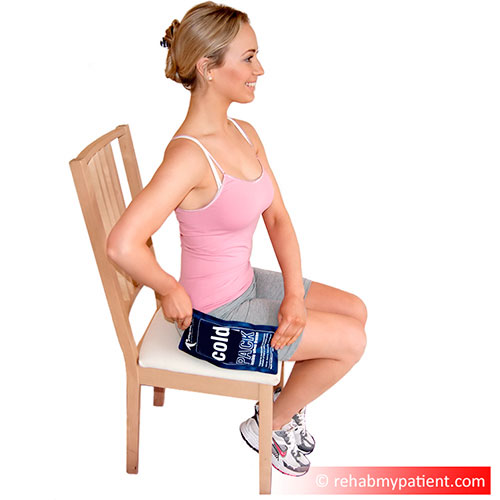
Bursitis occurs when the small sacs of fluid cushioning and lubricating the areas between the bones and the tendons become inflamed. The trochanteric bursa are larger sacs that separate the greater trochanter (a bony protuberance on side of the leg bone) to the muscles of the hip and the tendons in the buttocks and thighs. Bursitis can end up affecting the bursae surrounding the hip, but trochanteric bursitis tends to be the most common. The condition tends to occur more often in women who are middle-aged or elderly than what it does in men or younger individuals.
The condition can be the result of a minor injury, activities requiring rapid joint movement or repeated twisting or prolonged pressure on the bursa. These activities wind up causing the bursa to become irritated and inflamed. Trochanteric bursitis can either occur with a disc disease in the lower part of the back or hip arthritis. It can also develop where you previously had hip surgery. Conditions like gout also increase the risk of bursitis setting in.
Trochanteric bursitis is common, and the most common time to start to get pain at the side of the hip is following a change in walking gait. Patients are typically female, as mentioned above, and also tend to be fast walkers. During the gait change (which may be from a sprained ankle, a new pair of shoes, hip arthritis, or taking up a new sport) the hip biomechanics will now be changed. This causes the muscles along the side of the hip to flick over the greater trochanter and irritate or inflame the bursa.
Trochanteric Bursitis Anatomy
The hip is a ball and socket, and anatomically it sits at the front of the pelvis, in the groin region. At the side of the hip (technically speaking the side of the upper leg bone is called the femur) is the greater trochanter. This is a protuberance of bone that allows muscles to attach to it. Sitting at the side of the greater trochanter is a bursa, the job of the bursa is to protect the overlying muscles and tendons. So the bursa acts like a small cushion, or sack of fluid to protect the tissues over and under it.
One of the main tissues running over the top of the bursa is the iliotibial band (ITB). This is a commonly injured area in runners and it can become too tight. Stretching to this area, and to the buttock muscles can help reduce pressure on the bursitis.
How to Treat Trochanteric Bursitis:
- Ice
Apply ice to the affected area for 5-10 minutes at a time three to five times per day to help reduce inflammation and irritation in the hip. Make sure you wrap the ice in a thin towel to prevent an ice burn from occurring. You may need to ice the area every day for around 6-12 weeks.
- Slow Down
Take time to slow down and reduce your walking speed. This can take a lot of stress off the muscles that aggravate the bursa.
- Exercise
Follow the advice of your physical therapist, osteopath or chiropractor on which stretches and strengthening exercises to do.
- Therapy
Massage, ultrasound, electrotherapy and acupuncture can all be helpful at reducing inflammation of the bursa, and correcting biomechanical abnormalities.
- Steroid Injection
A very useful way to reduce inflammation from bursitis is to have a carefully placed steroid injection. Used in combination with therapy, this is likely to have the best results for persistent bursitis. - Gait Analysis
Having your gait checked might help. Also you could consider orthotics if your gait is abnormal. - Surgery
If all else fails, consider surgery. But make sure first you have tried at least two courses of therapy. Surgery will remove the bursa but it’s a last case scenario.
Tips:
- If you are overweight, losing excess weight can help to reduce the amount of pressure being placed on the hip joints.
- Avoid sitting or standing in one place for an extended period of time. Refrain from activities that bring on pain and discomfort.
- Medications can help to relieve some of the swelling and pain you are dealing with, but try to use them only for short periods of time.

Sign Up
Sign up for your free trial now!
Get started with Rehab My Patient today and revolutionize your exercise prescription process for effective rehabilitation.
Start Your 14-Day Free Trial